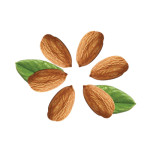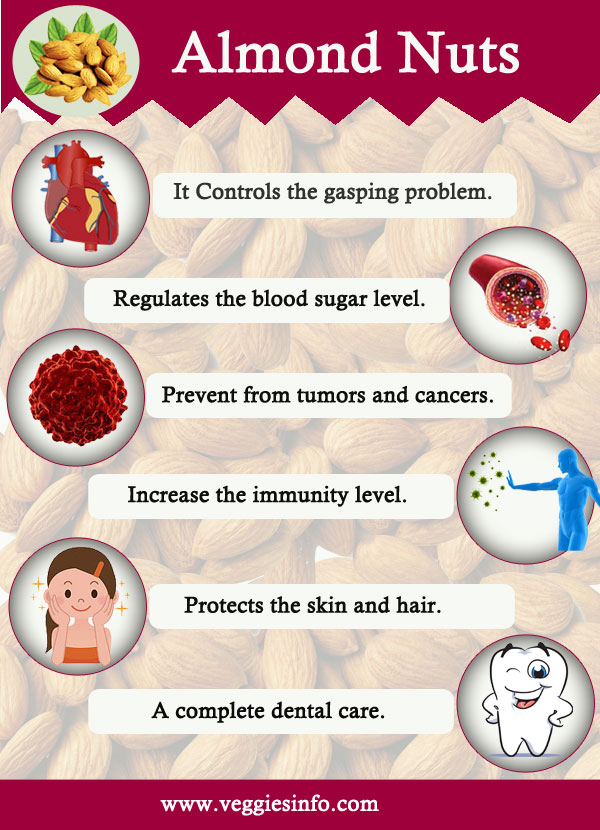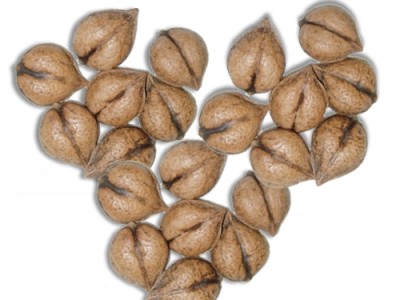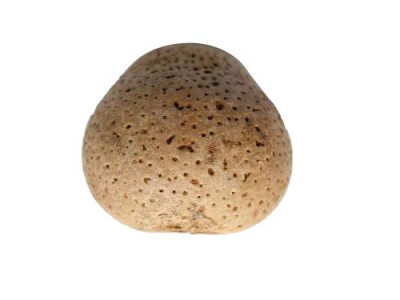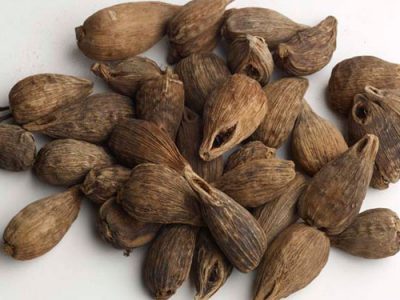
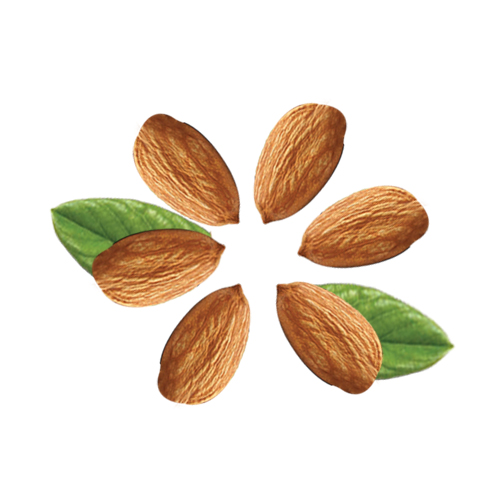
Almond Nuts Beneficial Properties & Health Facts
Almonds
Almonds are scientifically called as prunus dulcis . It is a stone fruit which is a family of nuts. In botanical form it is not a nut but comes under the pome family. It is deciduous tree grows up to 33ft long and 12inches diameter. Before the exposure towards sunlight the young shoot remains green. The leaves are approximately 5inch and the flowers are 2inch in size. The temperature needed by the tree to grow is around 30 ۫ c. To break the quiescence it requires the cooling temperature of 7.2*c. It reaches the economic growth at third year from planted. The full demeanor will be reached at the seventh year and the fruits get matured next to winter. Actually the almonds seed is not an exact almond. It is a hard outer cover which is to be soaked in water to loosen the outer shell. In Bible the almonds are mentioned, which proves that it was an ancient nut used before Christ. Almonds are said to be a symbol of belief in the Bible.
Origin Of Almond
The exact origin is unexplored but almonds are judged to have the origin from the central Asia and China. Middle East Mediterranean is another origin of almond species and also in the banks of Indus river in Pakistan. The almonds are stretched to various Asian and south European countries through the Mediterranean Sea. The barbarian almonds are mostly grown in the surroundings of Lavent. The wild seeds are more toxic which contains prussic acid a form of cyanide. A handful of wild almond is fatal like cyanide. These are then domesticated to make it edible. These are treasured in our ancient arts as a symbol of love, rejuvenation of birth, beauty and fusion of life. Some traitors believed that the shape of the almond is same as that of the shape of the lamp light which implies the Spirit of god.
Every region had some belief in consuming the almonds.
- In India, we consume almond for brain growth.
- In china, they had the belief that it shows the elegance of feminine and abiding the melancholy.
- Romans drench the almonds as copiousness of the couples.
- Americans from north give ephemera at wedding a handful of sweetened almonds representing the love and affection.
- Sweedish people find the hidden almond in a rice pudding for determining the affluence for a year.
Like these beliefs the people all over the world believed in almonds for a better result. The term “result” is trying to mention the exact response of almonds towards the human body. It is a protein rich food which emulsifies the unwanted fat stocked in the walls of the heart arteries. The stroke and heart blocks are eradicated by prolonged consumption of almonds. Also it contains the anti-oxidants which reduces the fat, anti-blemishes our skin and wrinkles around the eyes.
Take twelve Count of almonds to reduce the migraines. It is having the enzyme salicin which gets consumed, turns to salicyclic acid that regulates the functional activities of our brain. One aspirin is equal to twelve almonds. Almonds taste good when it is roasted and salted. The soaked almonds are more tastier than anything else. The taste varies up to your imagination. The almond skin plays a vital role in the extraction of nutrients. The skin part is more important which provides various enzymes like flavanoids and polyphenols. This food is low in cholesterol level and sodium .Also rich in Riboflavin and mostly Vitamin E. These compounds provide the best prelactic dietary fiber as a great supplement.
Pollination Of Almond
Almond is not at all a self pollinator. It is completely incompatible for self-pollination. Initially the beehives are mostly used by the cultivator to promote pollination. The more bee flight is good for increasing more production of the crop. The flower gets pollinated soon at the time of opening. But later the Agricultural Research Center initiated a new form of compatible self pollinating almond trees which doesn’t yield remarkable amount of change. Overall the pollination is comparatively reliable and provided greater yield to get the crunchy almonds.
Types Of Almonds
There are two common varieties of almonds.
- Sweet almond
Domesticated almonds are always sweet in taste. This almond is odorless and endured with skin and easily absorbed. Increase the immunity of the skin and keeps it moisturized and fair.
- Bitter almond
It is slightly shorter than sweet almond. It contains a toxic substance which is more fatal like cyanide (hydrogen cyanide). Enzymatic hydrolysis is the origin of bitter almond where the cyanide takes place.
Nutritional Value Of Almond
Every creature in the world has both pros and cons. Almond also comes under that category. The main issue is crystallization, which is held due to excessive presence of oxalates. The people with major kidney and intestinal problems are not advised to take almond which improvises the major problems. Also too much of vitamin E intake makes over dosage results in blurred vision, headache and blenching problem.
Health Benefits Of Almond
Almond is rich in fiber that prevents the constipation. Sufficient intake of water after taking 5 to 6 almonds make the digestive tract to activate the intestinal movement. It prohibits the colorectal cancer with enriched fiber content in it. Also to eliminate the protein deficiency diseases like Alzheimer and Kwashiorkar by consuming almonds. This stimulates the passage for the new neural connections. The presence of Riboflamin fructifies the energy and the metabolic rate.
There are enormous Health benefits present in the almond. They are:
- Controls the gasping problem.
- Prevent Heart problems.
- Regulates the blood sugar level.
- Prevent from tumors and cancers.
- Increase the immunity level.
- Strengthen the bones .
- Impotency can be resolved.
- Protects the skin and hair.
- A complete dental care.
- Increase the quality and endurance of muscles.
- Good for pregnancy.

